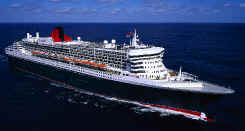The coming ubiquity of wireless networks


So what?
The ability to "phone home" has long been a feature of computer systems--what system administrator hasn't gotten a panicked page from one of his machines in the middle of the night?--but the coming ubiquity of wireless networking is poised to make it much more common. Manufacturers will use wireless sensors to strengthen relationships with customers by providing not just products but support services around those products. For example, a garage might use sensors in your car proactively to detect problems and dispatch a mobile unit to fix them before they become troublesome. If your car has GPS then the garage can service it without even calling you: You'll be sitting at a particularly long red light, for example, when a van will screech up behind you and disgorge several burly young men with tire irons who will converge rapidly on your car. Granted, today that would be bad news. In a few years, though, it might just be considered part of the service. --from =""="" class="c-regularLink" target="_blank" rel="noopener nofollow">Ed Gottsman